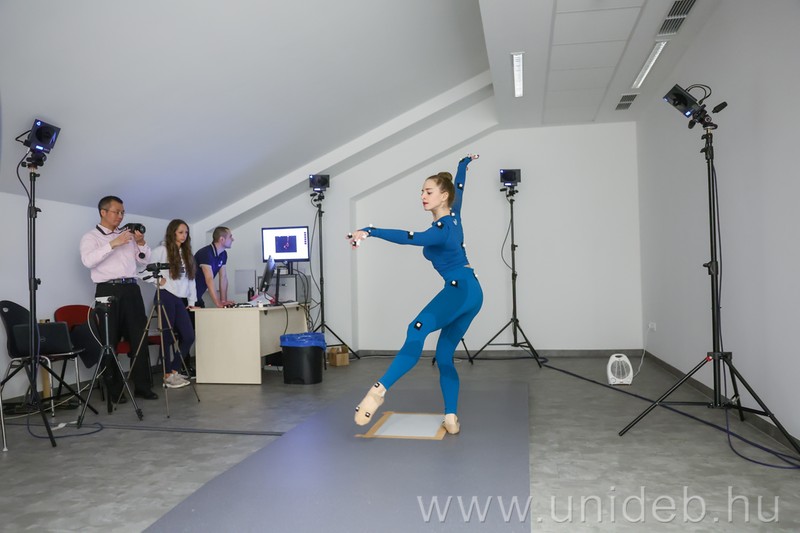The Faculty of Informatics of the University of Debrecen conducted research related to professional and amateur dance genres and created a three-dimensional animated illustration that can be used in dance education at the Sports Diagnostics, Lifestyle, and Therapy Center. The specialists carried out the measurements and tests using the motion capture device.
The Research Institute of Art Theory and Methodology of the Hungarian Academy of Arts and the Faculty of Informatics of the University of Debrecen jointly participated in the project called Applications of Virtual Reality in Arts, to study and analyze in detail the sequences of movements in a three-dimensional virtual space for educational and scientific purposes with the participation of professional and amateur dancers.
We experimentally investigated how ultramodern technologies can be applied in dance education. The basic idea was to record some exercises that can also be used in amateur dance genres and some professional movements in order to be able to analyze the movements and the intensities, observing how and at what speed the different dancers move, with what force they push the ground in certain movements, how body parts are used. Their symmetry can also be analyzed separately. We paid attention to how efficiently the dancers participating in the program were able to master the new forms of movement
– said Attila Gilányi, associate professor of the Information Technology Department of the UD Faculty of Informatics.
In the course of the scientific work, the tests were carried out using the so-called motion capture device available at the Sports Diagnostic, Lifestyle and Therapy Center of the University of Debrecen in the genres of ballet, modern dance, Lindy Hop, and tap. Equipped with six infrared cameras, the modern device detects the movements of the markers attached to the dancers and creates images that can be studied in three-dimensional space. The results will be evaluated in detail in the next period and can be used in dance education, the instructors will be able to teach the dancers with the help of virtual technology.
In addition to faculty members, choreographer Michael Kropf, ballet master, director of InterEuropa Ballet, choreographer László Bóbis, dance instructor, performer, two-time world and European champion tap dancer of the IDO organization, WRRC world champion silver medalist Lindy Hop dancer, ballet artist Emese Bíró took part in the survey. , dancer Minea Kropf, dance teacher, and dance researcher Anna Mária Bólya, a teacher at the Hungarian Academy of Dance, project leader.
unideb.hu



















